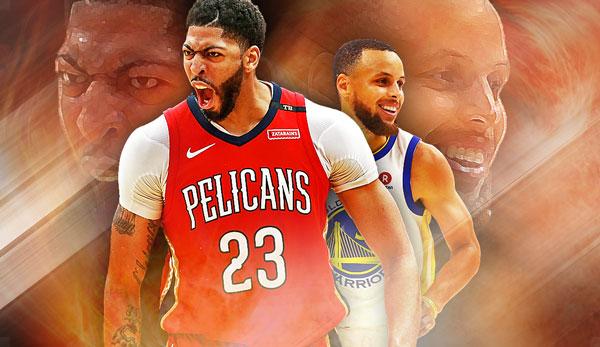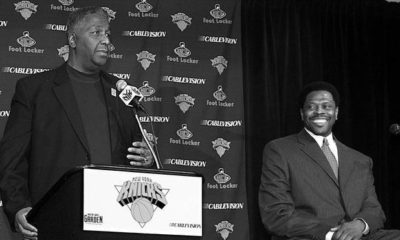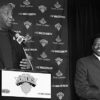US-Sport
NBA: AtB: Why are the scores so high? And reader questions
Welcome to Above the Break – the NBA column at SPOX! NBA editor Ole Frerks is dedicated to interesting league topics and answers readers’ questions. The premiere for 2018/19 will be about the inflationary scores in the league.
If you check the box scores of the night in the morning during the first weeks of the new NBA season, you can easily swallow a cup of coffee. Here the Pelicans scored 149 points, there it is 132 from defensive bulwark Utah, the Hornets played 135 and the Spurs and Lakers fought a 143:142 battle, albeit after overtime.
It seems as if there is at least one score every day that would have been enough for the monthly best ten years ago – and the season is barely two weeks old. And this appearance is not deceptive: Of course we are still at the beginning of the season and the sample is accordingly small, some things will still normalize.
However, there are currently four teams that play over 120 points per game – the last team to make it over a season were the 84/85 Nuggets, who are considered the creators of modern run&gun basketball under head coach Doug Moe. They had set the all-time record three years earlier (126.5); before Anthony Davis missed a game with the Pelicans, the Pelicans were over it.
It’s also not like some teams just shoot like wild and the league is otherwise “normal”. Since the 70/71 season, the average points scored per game have not been as high as they are now. On average, 112.1 points are scored per team. That’s almost 6 points more than last season, when the score was more than good.
Now one wonders, on the one hand, where this explosion is coming from and, on the other hand, how sustainable it is, whether the increase in scoring will last for a long time. The factors that play a major role in this are already quite different. An overview …
Word has got around that the Rockets and their general manager Daryl Morey favor a throwing profile consisting of free throws, layups and threes, preferably from the corner. The middle distance is taboo at least for role-players, three players, layups and free throws bring more points per ball possession. That’s not new anymore, but what’s new is that almost the whole league has internalized this philosophy.
Last season, Houston were still at the top of the league with 42.3 threes per game, the second placed Nets were far away with 35.7 attempts – currently Houston, Dallas, Atlanta and Milwaukee are throwing over 38 threes, the league average is 31.6 attempted triples per team (last season: 29). To the classification: The Warriors, who traditionally can only throw anyway, are meanwhile below the average (30).
More than ever the league has fallen in love with this litter and also the average free litters have increased again, although not dramatically (from 22 to 24). The midrange, on the other hand, are increasingly avoiding teams – although the Spurs are still doing well with their oldschool basketball offensively. Teams like OKC or Boston suffered from missing spacing at the front.
Of course, talent still makes the biggest difference. But it’s obvious that Morey’s model works mathematically and gives teams that don’t have Curry or Durant a better chance of winning.
The Hawks, for example, have two victories to their name primarily because they shoot threes and play fast like hardly any other team – a lack of talent can be at least partially compensated for in this way.
Speaking of fast play. While Atlanta leads the league with a pace of 107.1 (which would also be the highest since the 80s), the rest of the league is not far behind: The average value, which calculates how many ball possessions teams have per 48 minutes, currently stands at 101.5, its highest value since 1985/86. Last season the average was significantly lower at 97.3.
There are several reasons for this as well. On the one hand, the playful: Every basketball player knows that fast breaks are fun on the one hand and on the other hand lead to success more often in overpaying situations than half-field openers. Against unsorted Defense it is much easier to find open throws and the field is even wider.
The Lakers are a good example of this. LeBron often only ran fast breaks in Cleveland when he could intercept passes and sprint one-on-zero to dunk. The Lakers, on the other hand, also push the ball for points they collect – in this respect it helps that they have so many playmakers.
Often the ball is not dribbled forward at all, but passed forward over several stations (such as Lonzo, LeBron and Hart) in order to force the ball to finish immediately. The Lakers ride much better than in the Halfcourt, where their shooting problems weigh much more heavily.
The sooner the better. Who still remembers the revolutionary “7 Seconds Or Less”-Suns – their highest pace factor (96.7 in the 07/08 season) would not only be a slow, but the slowest value of the league today! Even the Pacers, Spurs and Grizzlies have more ball possessions than Steve Nash and Co. ten years ago. How times change.
Of course, this is not only due to the philosophy of the game. The NBA also has its influence with some rule changes and new guidelines for the referees, which were decided before the season.
The NBA has decided on the one hand that after offensive rebounds the clock will only be reset to 14 seconds this season, not 24 seconds as before. This has already been tested in G-League and WNBA and may not seem like much at first glance, but it has a cumulative influence.
Offensive rebounds have gone out of fashion away from OKC, but still account for more than 20 possessions per game, which now have to be completed faster. Especially at the end of games, it is good for the speed that players are no longer allowed to stand three meters behind the three-way line with the ball for 15 seconds and wait before starting an action.
A bit more mixed are the results so far at the “Points of Education”, which the referees received from the league office as every year. At the start of the season, for example, you should pay more attention to ensuring that players’ freedom of movement is not restricted away from the ball, which in itself is a good thing – but the measure is often not right.
One already knows the phenomenon that the referees whistle a very petty line at the beginning of the season and especially follow the points of education a little overzealously. Some games seem to be a bit snitched, it happens too often at the moment that teams are in foul trouble after only three minutes of a quarter.
This also causes the possession of the ball to change back and forth more quickly, resulting in more possessions, but in this case also more real playing time, which should actually be avoided. Both the referees and the players will probably come to an even better arrangement with the new guidelines.
The figures should normalise to some extent in the course of the next few weeks. There has always been an increase in scoring since 2011/12, but never so massively from one season to the next as currently. But the numbers will hardly fall low. It’s no secret that modern rules don’t exactly outdo defense, and it will continue in this direction for the time being.
High scores, high tempo and many threesomes are spectacular and therefore very in the spirit of the NBA, especially in the long Regular Season (in the playoffs the equation will be different anyway). The teams will exhaust this style until there is nothing more to exhaust or some pioneer initiates counterrevolution. What this will look like is not yet clear (even if the Kings could have a Starting Five from Big Men tomorrow – why not?).
Especially since the point has not yet been reached. There’s just too much untapped potential left for that as you adapt your offense to the modern style of play, place shooters in the corners and give them the green light. Brook Lopez and Ersan Ilyasova are not the only reasons why the Bucks have changed this season – but they are symbolic of the new reality.
Page 1: The reasons for the scoring explosion
Page 2: Readers’ questions


















You must be logged in to post a comment Login